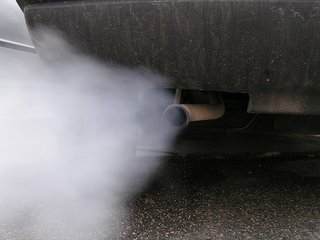Our analysis of research by SBA, EPA, DOT, and Census Bureau data shows that while less than 5% of the U.S. workforce currently work from home, 40% have jobs that would allow them to telecommute. If they did, according to our study, these new teleworkers could annually save 625 million barrels of oil (roughly equivalent to 80% of our Gulf Oil Imports), reduce greenhouse gases by 107 million metric tons of CO2 each year, and save almost $43 billion at the pump (at $3.50/gallon). Each worker individually would save 26 work-days and over $800 each year — time and money now wasted commuting.
This work is part of background research we’re doing for our book on telework and home based business opportunities that will be published by John Wiley & Sons titled Undress 4 Success: The Naked Truth About Working From Home.
Details of our work is available here on our Research Page where you can look-up existing and potential telework savings for every city, state, county, and region in the country. We’ll even customize the data-free of charge-for reporters, government agencies, companies, and other organizations who want to know the potential impact telework could have on their carbon footprint. Requests can be submitted on the Research Page.
There’s all kinds of research that suggests telecommuting or working from home offers benefits for all concerned, but we wanted to put some numbers behind the claim. In one sense the commuting time saved means a teleworker gets a day off every other week, but report after reports shows that people use that extra time productively instead.
While telework offers individuals who can work from home a better work/life balance, it also offers companies real increases in productivity, higher worker satisfaction, and reduced costs. Telecommuting also offers the community reduced highway congestion, lower greenhouse gas emissions, and less dependence on foreign oil. Telework can make a real contribution to improving our environment.
Sources / Additional Details:
2006 American Community Survey / Census
2004 BLS Current Population Survey
2002 Survey of Business Owners
2007 CEA Energy & Greenhouse Gas Emissions Impact
Bureau of Transportation Statistics (BTS) Omnibus Household Survey
Reason Foundation—The Quiet Success: Telecommuting’s Impact on Transportation and Beyond
Code of Federal Regulations at 40 CFR 600.113-78
Energy Information Administration - How Gas Is Formed
Workforce Assumptions
Size of workforce and existing work at home workforce numbers comes from the U.S. Census Bureau - Means of Transportation To Work (B08301) 2006 American Community Survey.
The data on means of transportation to work were derived from answers to American Community Survey Question 25, which was asked of people who indicated in Question 23 that they worked at some time during the reference week. Means of transportation to work refers to the principal mode of travel or type of conveyance that the worker usually used to get from home to work during the reference week.
People who used different means of transportation on different days of the week were asked to specify the one they used most often, that is, the greatest number of days.
• Percent Who Could Work At Home = 40%
CEA Energy & Greenhouse Gas Emissions Impact‚ page 47. Matthews and Williams (2005) estimate that information workers that could have the potential to telecommute represent 40% of the U.S. workforce. Excludes those who already do, regardless of how often the work from home.
• Roundtrip Minutes to Work = 52
Bureau of Transportation Statistics (BTS) Omnibus Household Survey - Average commute is 15 miles each way (26 minutes)
• Number of days/week each worker telecommutes = 5
• Number of workweeks/yr = 48
Excludes 2 weeks vacation, 5 paid holidays, and 5 sick days.
Per Person Assumptions
• Commuting miles saved / per person = 30
Bureau of Transportation Statistics (BTS) Omnibus Household Survey. Average commute is 15 miles each way (26 minutes) - Avg. miles not avail by region
• Per Person Savings in Days = (5 days a week, times 48 weeks per year, times 52 minutes) divided by 60 minutes, divided by an 8 hour work day. Essentially this is additional free time the telecommuter realizes each year.
• Percent of reduced travel from telecommuting = 65%
2005 Reason Foundation — The Quiet Success: Telecommuting’s Impact on Transportation and Beyond. Page 3. Telecommuters reduce their daily trips by 53 to 77% on telecommuting days. We’ve used 65% in our calculation but many telework researchers argue the number is closer to 90% because the side stops they would have made on the way to or from work are eliminated or are handled together in a more efficient fashion.
• MPG = 20.3
EPA MOBILE6.2 2003 (EPA’ computer model) weighted average of 23.9 mpg for cars and 17.4 mpg for light trucks. Your mileage, as they say, may vary.
• $ Saved per person / yr assuming $3.50/gallon
Aggregate Assumptions
• Gallons saved/year
Gallons per person savings times the number of teleworkers
• $ Saved
$ Saved per person time the number of workers
• Barrels Saved:
Gallons of gas per barrel of crude = 0.466667
42 gallons (1 barrel) of crude equals 19.6 gallons of gas. Energy Information Administration, Petroleum Supply Annual 2005, June 2006.
U.S. Gulf Oil Imports = 791,928,000 barrels
Greenhouse Gas Savings (aggregate/yr)
• CO2 savings in pounds = 19.4
A gallon of gasoline is assumed to produce 8.8 kilograms (or 19.4 pounds) of CO2. This number is calculated from values in the Code of Federal Regulations at 40 CFR 600.113-78, which EPA uses to calculate the fuel economy of vehicles, and relies on assumptions consistent with the Intergovernmental Panel on Climate Change (IPCC) guidelines.
• Conversion of CO2 savings from pounds to metric tons = .00045359237









Business Finance Expert Series: “What Every Business Owner Needs to Know About Factoring”
Factoring is a promising way to stimulate the cash flow of a company. Its growing popularity can be gauged from the statistics that factor finance approximately amount to $70 billion in United States each year. In United Kingdom it represented a total …
Thanks for the great reference material!
[...] what’s the point to this diatribe? The point is, as our research has shown, if just 40% of our workforce would telecommute (a realistic percentage supported by three studies, [...]
Your materials parallel my efforts to get Telecommuting to be used as a means to radically reduce fuel costs in general, albeit my aproach is more radical. Too bad it will never fly though. Too much tax money will be lost.
mike o’grady
http://www.digitalfuel.org
[...] want. However, as web workers we know that there are things that make our work more challenging. If at least 40% of the American workforce have jobs that can be done from home, what exactly prevents them all from becoming [...]
What a great research! Congrats for sharing the results :-) I feel proud to be part of this smart way of living and working